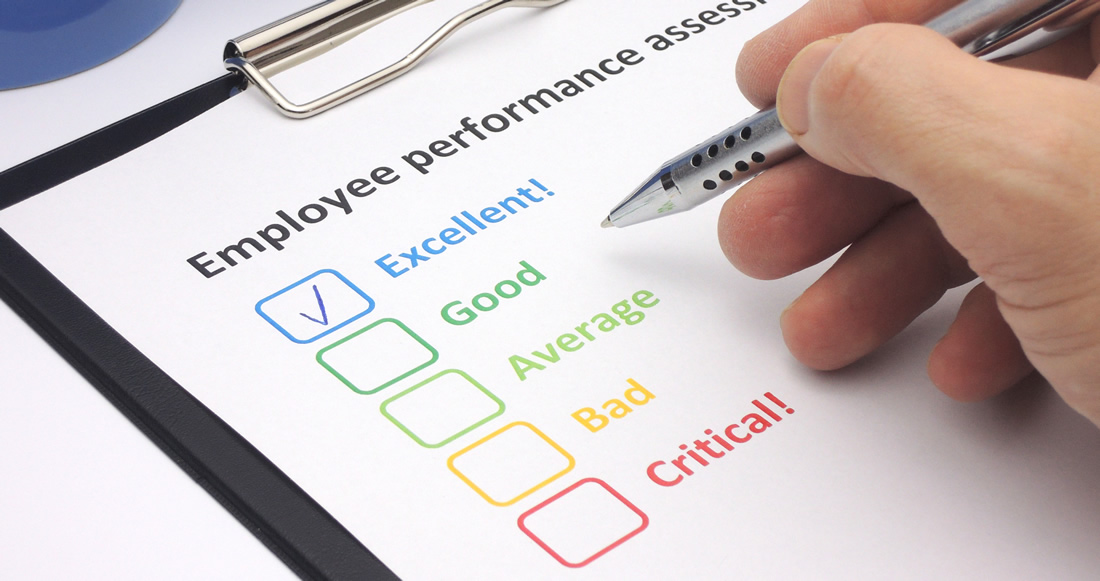Performance Evaluation in a Practice
Performance evaluation is viewed as a process to ensure a high quality of service to the patients and clients of the practice by fostering the personal and professional growth of the staff. A performance evaluation does not necessarily mean that the employee will receive an increase
in pay. That is not the purpose of the review and should be addressed as a separate issue at another time. In this way, the evaluation is not linked to a pay raise.
The employee performance evaluation is a broad process covering many aspects of performance. It attempts to provide a fair, equitable, and valid approach for assessing the performance of professional employees. It is also designed to provide a sound basis for the
recognition of good performance and the identification of areas of deficiency that require correction. Each employee should have his or her performance evaluated at least once annually.
The evaluation of performance is a joint effort between the staff and the administration. Through joint participation, the greatest possible level of trust and understanding of the performance evaluation process will be achieved. It is believed that acceptance and understanding must exist if the process is to be effective.
The performance evaluation process attempts to measure:
- The acceptable performance level of a job
- Individual strengths and weaknesses as they relate to job performance
- Professional and personal development
A performance evaluation is not a cure-all tool. It is, however, important to the function of the organization and execution of the individual’s job. This tool is utilized to initiate dialogue between the supervisor and employee. It helps to monitor progress and provides a sound basis upon which the supervisor can monitor performance, recognize good performance, detect deficiencies, and implement plans to make improvements.
The Process of Performance Evaluation
The process is founded on several important factors:
- The staff member’s orientation to:
- Organizational goals
- The job description for the ideal staff member
- The job description for the individual position
- Systematic assemblage of data on performance evaluation to include:
- Assessment of performance
- Employee feedback
- Measures to correct deficiencies
A new employee will have a review at 30–90 days to provide an assessment of his or her performance up to that point (remarkably deficient performance will be dealt with as soon as it is evident). In most cases, this review will afford the employee an opportunity to make improvements before the next formal review. Thereafter, formal reviews should be conducted every six months for the first year, then annually after that, although more frequent reviews may be required as deemed necessary by the office manager. Each formal review will focus on past performance and a plan for future performance
The evaluation will be based on performance in two broad categories:
- Professional responsibilities
- Organizational responsibilities
Within these categories, specific areas will be assessed.
In the category of professional responsibilities, the following areas will be assessed:
- Quality of care
- Effectiveness in patient management
- Professional development
In the category of organizational responsibilities, the following areas will be assessed:
- Adherence to the policies
- Adherence to the Job duties of an ideal staff member
- Communication
- Interpersonal relationships
- Practice development
The data collection phase of the evaluation process will involve the gathering of information by the office manager from all sources that he or she deems appropriate. Generally, input will be from:
- Patient comments
- Quality control data
- Statistical data observation
- Documentation regarding compliance with organizational policies.
Following the information collection, the office manager, the doctor and the staff member will complete the performance review forms, and a performance review meeting will be scheduled.
Steps to Follow for the Evaluation Procedure
- The office manager will distribute to the employee a copy of the job duties for an ideal staff member and job duties for the position the employee holds.
- The staff member will fill in their rating of each point (the office manager will also provide ratings).
- Place a checkmark (✓) next to any item that is deficient and is in need of improvement.
- Place a star (★) next to any item that is excellent.
- Leave blank any item that is fine as it is, although the goal would be to work toward excellence in these categories.
Suggested Rating System
- The evaluation process begins with the orientation of the new employee. During the orientation, the employee is made aware of the organizational goals. The individual’s job description (both as a staff member and for the professional position that they hold) is discussed, and an understanding of job expectations and standards for evaluation is reached.
- At this meeting, the performance for the previous period is reviewed, and the employee is given an opportunity to comment on any area of the assessment.
- As the review is progressing, both the office manager and the staff member should keep notes with regard to areas to work on and goals that are set. In cases of deficiencies where correction seems achievable, and reasonable in terms of practice resources, every attempt will be made to work with the employee to affect change.
- The employee then signs the document. An understanding is reached concerning past performance and expected future performance and an outline of future performance expectations is drawn up and discussed.
If you have any questions about doing a performance evaluation, what you should be doing afterwards or have any questions that would help you manage your practice better, feel free to give us a call at 1-800-695-0257 or fill out the form below, and we would be happy to get back to you.

